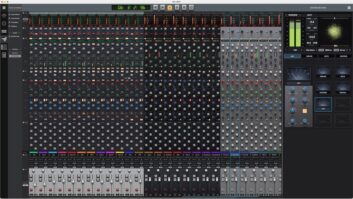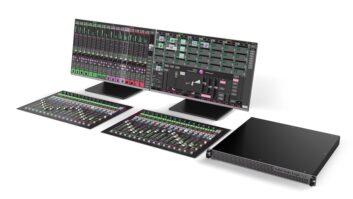Organizations representing musicians, songwriters, publishers and record labels in the United States launched a new interactive website on April 30 that, for the first time, analyzes the economic and cultural impact of the music industry on each individual state. Aggregating data from the American Association of Independent Music (A2IM), ASCAP, BMI, the Recording Industry Association of America (RIAA) and SoundExchange, and incorporating analysis by Stephen Siwek of Economists Inc., the infographics offer insight into the participation of each state in the country’s music industry, which contributes $143 billion to the U.S. economy and supports nearly two million American jobs.

The website, www.50StatesOfMusic.com, drills down into the data to highlight the contribution of the music industry to each state’s GDP (gross domestic product). Although the website acknowledges that the information is not intended to be comprehensive, nor does it detail the sources and derivation of the data displayed, it does present some enlightening music industry metrics.
The website breaks down the number of jobs and businesses that the industry supports, along with with the number of royalty recipients, songwriters and streaming music subscribers residing in each state. Each state’s page also identifies its major music venues and festivals, and lists some of its most prominent musicians. Where applicable, each page also lists a state’s music schools and major music conferences.
According to Mitch Glazier, RIAA chairman and CEO, “Music is a uniting force—a beloved cultural asset that speaks to each and every one of us in our lives. We know this, but what is less known is the enormous economic value music provides in hometowns throughout the USA—from the local music store and concert venue to the music festival and hard-working songwriters and musicians in each and every state…. This new site finally paints a proper picture of the U.S. music industry as one that is truly local, growing and more important than ever. We hope that the entire music business, fans and policymakers find this a useful resource as we continue our work toward a bright future for U.S. music.”

The fact that streaming music subscriber numbers for each state are included is illuminating. The RIAA’s annual music industry revenue report for 2018, released at the end of February, noted that the third consecutive year of double-digit growth was due in no small part to music streaming service subscriptions, which passed the 50-million mark last year. Glazier comments that fans have access to music via 400-plus licensed services globally.
Related stories from Pro Sound News
• 2018 Wrap-Up: Recorded Music Growth Is Strong, but Slower, by Steve Harvey, Jan. 25, 2019
• Global Recorded Music Revenues Continued to Grow in 2017, by Steve Harvey, May 3, 2018
• RIAA Reports Signs of Recovery, Sep. 25, 2017
Thanks largely to the growth in streaming, which accounted for 75 percent of 2018’s total revenues, last year saw a 12 percent increase in revenue over the previous year to $9.8 billion (estimated retail value). Physical sales accounted for 12 percent, digital downloads contributed 11 percent and sync licensing generated 3 percent of the year’s total revenue.
Glazier offered a reality check, however. “As noteworthy as it is for the business to approach $10 billion in revenues again,” he wrote in a Medium post that coincided with the annual report’s release, “that only returns U.S. music to its 2007 levels. Stream-ripping, and a lack of accountability for many Big Tech companies that drive down the value of music, remain serious threats as the industry strives for additional growth.”
That industry revenues are now nearly equal to 2007’s $10.8 billion high point suggests that major labels have successfully reinvented themselves for the new streaming era, an environment in which an artist such as Billie Eilish could rack up 1 billion streams before releasing a full-length debut album on the Interscope imprint. The all-time peak for U.S. record revenues was $14.6 billion in 1999, according to the RIAA (approximately $21.5 billion, adjusted for inflation), when the compact disc dominated but before the impact of Napster, launched in June 1999, was felt in earnest. The RIAA successfully sued and shuttered Napster in July 2001.
Related: Finneas on Producing Billie Eilish’s Hit Album in His Bedroom, by Steve Harvey, May 23, 2019

Glazier’s post, referencing a report by Larry Miller, music business program director at NYU Steinhardt, notes that, encouragingly, major labels signed more than 650 new artists in 2017, up from 589 the year prior. “[T]he realities of the 24/7 global marketplace demand specialized teams with the ability and resources to react instantly to opportunities wherever and whenever they pop up—and the labels have evolved to meet this need,” Miller writes in his report, Same Heart. New Beat. How Record Labels Amplify Talent in the Modern Music Marketplace.
Nationwide, in addition to the music industry’s previously mentioned $143 billion contribution to the U.S. economy, it also supports 1.9 million jobs and 157,189 businesses. Across the country, 141,866 musicians receive record royalties, according to SoundExchange figures, while ASCAP and BMI put the total number of songwriters at 1.17 million.

Want more stories like this? Subscribe to our newsletter and get it delivered right to your inbox.
As might be expected from a state with the world’s fifth largest economy, California’s numbers are pretty eye-popping. The music industry contributes $38.4 billion to the state’s GDP, supporting more than 447,500 jobs and 40,301 businesses. For comparison, in New York, the country’s other major music business hub, the industry contributes just a fraction under $20 billion to the Empire State’s GDP while supporting 224,701 jobs and 18,322 businesses.
In Tennessee, home of Nashville, the country’s third major music business center, the industry accounts for just short of $5 billion of state GDP and supports 61,769 jobs and 5,846 businesses.

That said, Tennessee is put in the shade by the Lone Star state, host of the South by Southwest festival and Austin City Limits and home of Beyoncé, Willie Nelson and ZZ Top. Supporting 119,476 jobs and 8,331 businesses, the music industry contributes $6.5 billion to the Texas GDP.
Of course, someone must always be in last place, an honor reserved for Wyoming. While the state hosts the annual Grand Teton Music Festival in Jackson Hole and three other major festivals, Wyoming’s page on the 50 States of Music website lists just three notable artists: Chris LeDoux, Teenage Bottlerocket and Scott Avett. The industry generates $42.2 million toward state GDP—less than half of nearest rival Alaska’s figure of $106.7 million—while supporting 117 businesses and fewer than 700 jobs.
50 States of Music • www.50StatesOfMusic.com
RIAA • www.riaa.org







